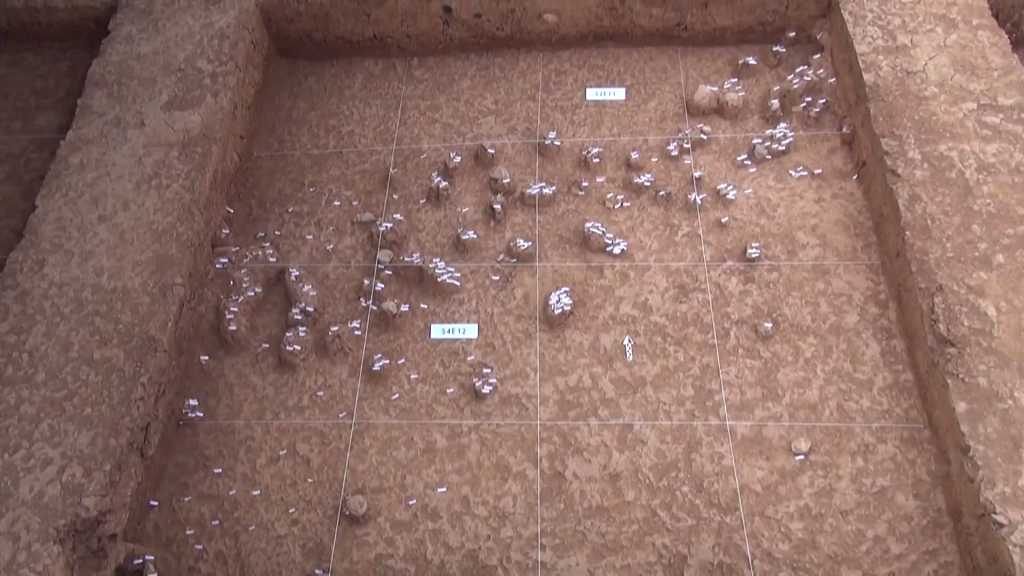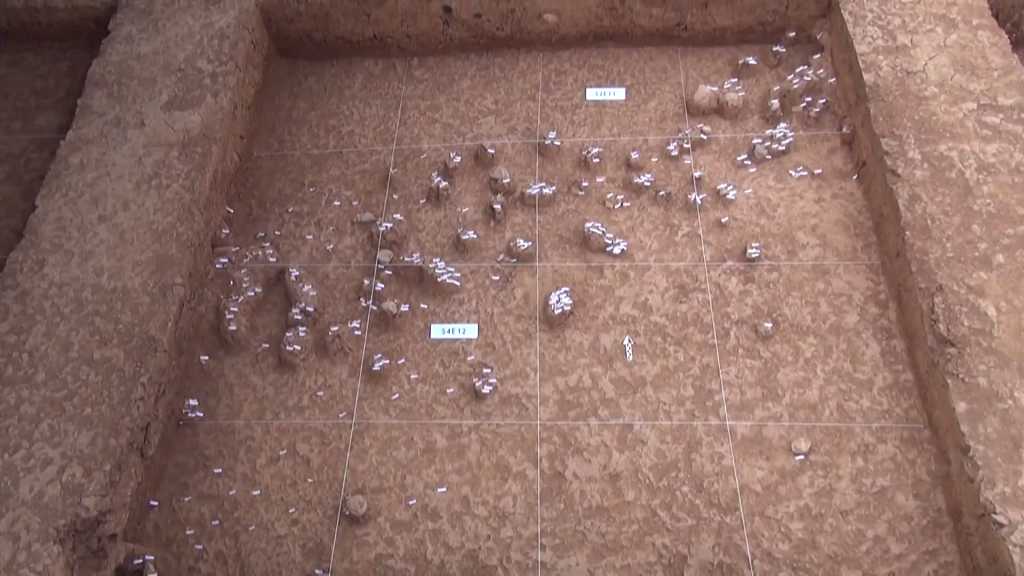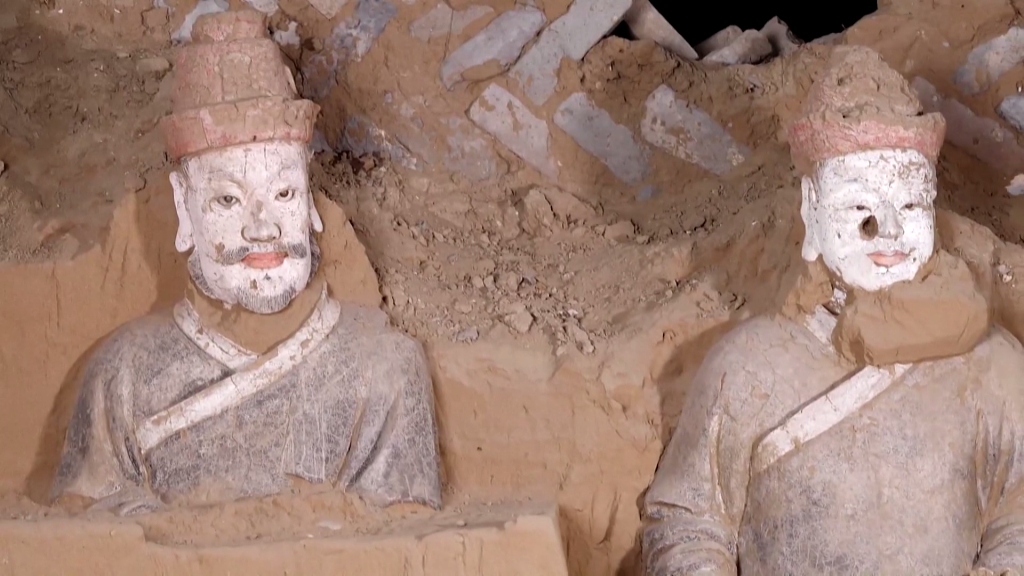Shaanxi unveils six new archaeological discoveries in 2022
2023-03-16 14:22:07 , Source : CGTNOn Sunday, the Society for Shaanxi Provincial Archaeology announced the "Six New Archaeological Discoveries in Shaanxi in 2022." The province, situated in China's hinterland, is regarded as the cradle of Chinese civilization and the birthplace of Huaxia culture.
Luonan Yeyuan Site

The Luonan Yeyuan Site provides solid evidence of human history in China dating back over a million years. /CFP
The Luonan Yeyuan Site is located in the western part of the Luonan Basin. More than 12,000 stone artifacts have been unearthed and analyzed there, revealing clear traces of human activities dating back millions of years.
This discovery provides solid evidence that people lived in China over a million years ago, extending the known history of human activity in the Luonan Basin by at least 300,000 years.
Xunyi Xitou Site

The Xunyi Xitou Site covers an area of approximately 2 million square meters and contains relics from the Shang and Zhou dynasties. /CFP
The Xunyi Xitou Site covers an area of roughly 2 million square meters and contains relics from the Shang (1600-1100 B.C.) and Zhou (1100-256 B.C.) dynasties. It is one of the largest Shang and Zhou period settlements discovered to date in the Jing River Basin.
The Xunyi Xitou Site provides valuable materials for the study of settlement layout, demographics, and social changes during the Shang and Zhou periods. They also offer a key to exploring the origin and development of Zhou civilization and searching for the ancient capital city "Bin" mentioned in historical documents.
Liyang City Site from the Qin and Han dynasties

The Liyang City Site from the Qin and Han dynasties is located in Xi'an City. It was the first capital city of the Han Dynasty. /CFP
The Liyang City Site from the Qin (221-206 B.C.) and Han (206 B.C.-220) dynasties is located in Xi'an City, the first capital of the Han Dynasty.
In 2021-2022, architectural cleaning was carried out at the site dubbed No.3 ancient city, which fully revealed the main buildings of the palace core area. A north-south axis that passes through this part of the ancient city was also discovered on its eastern side, which is currently the earliest known and confirmed axis of a capital city.
Ancient Bridge Site of the Three Palaces in Xi'an from the Han Dynasty
The Ancient Bridge Site of the Three Palaces from the Han Dynasty in Xi'an is currently the only ancient bridge discovered through archaeological excavations in the Chan River Basin.
The site boasts 874 densely distributed bridge piles, which cover a wide span from east to west and a broad width from south to north. It stands as a representative example of high-level bridge structures during the Han Dynasty, and offers abundant resources for researching the construction and repair processes of such bridges.
Joint Site of Five Parallel Bridges on Zhuque Avenue from the Sui and Tang dynasties
Zhuque Avenue was a vital north-south thoroughfare in the Sui (581-618) and Tang (618-907) dynasties that linked Zhuque Gate of the Imperial Palace to Mingde Gate in the outer city wall. It served as the central axis of both Daxing City in the Sui Dynasty and Chang'an City in the Tang Dynasty.
The Joint Site of Five Parallel Bridges is located on the central axis of Zhuque Avenue. It represented the highest level of imperial city protocol, showcasing the grandeur of the Tang Dynasty. Therefore, it holds crucial importance for studying Chang'an City's layout and protocol system during the Sui and Tang dynasties.
Jingbian Qingping Fort Site

The Jingbian Qingping Fort Site was the first large-scale scientific excavation of a Chinese Great Wall site. /CFP
The Qingping Fort Site runs for approximately 600 meters from north to south and 300 meters from east to west. It was one of the 36 fortresses of the Ming Dynasty's (1368-1644) Yansuizhen Great Wall, and served as a venue for trade between the Ming and Mongol dynasties during that time.
Qingping Fort was the first large-scale scientific excavation of a Chinese Great Wall site. Through the archaeological work, the subjective positioning of military control and commercial exchange during the construction of the Great Wall was clarified, as well as the specific role the Great Wall played during use.

Government Organizations



Other Links

Copyright@www.shaanxi.gov.cn All Rights Reserved
Registration Number:陕ICP备10004160号
